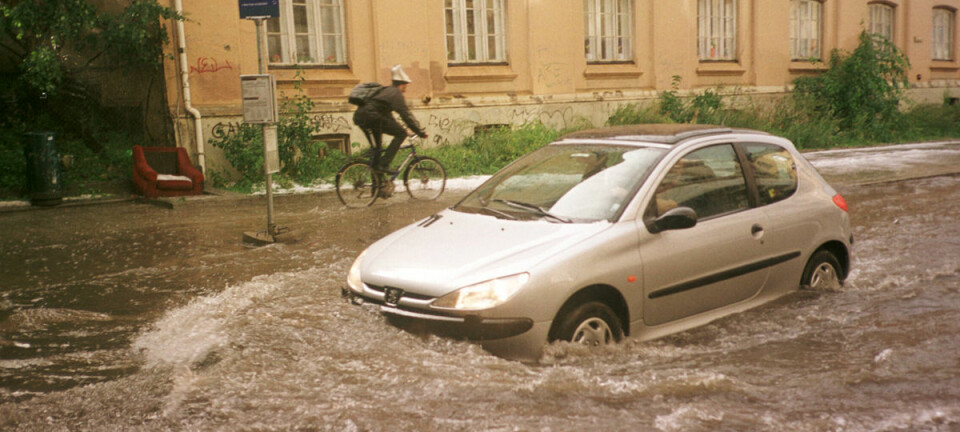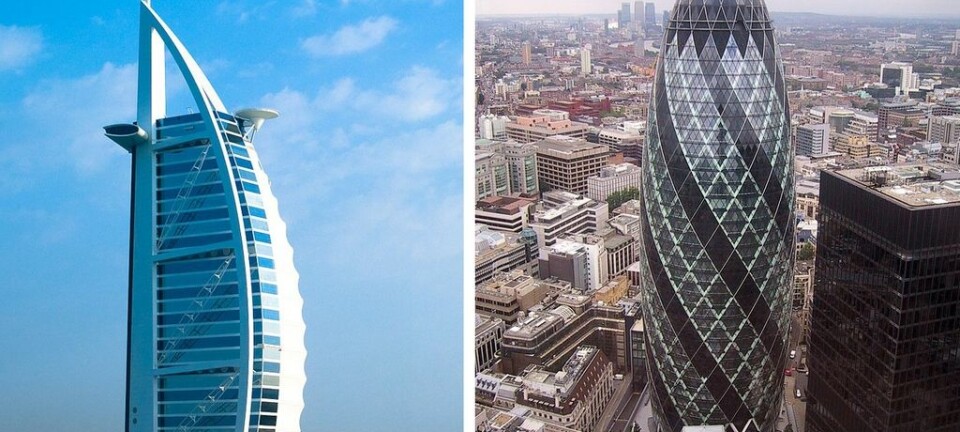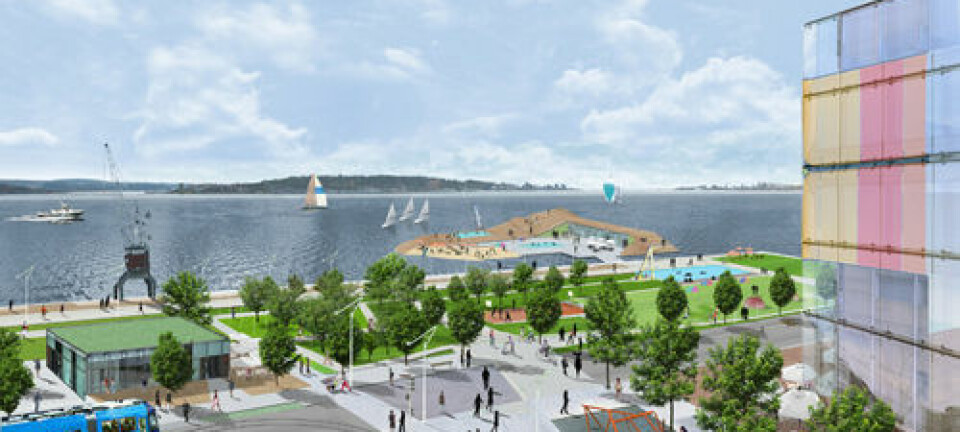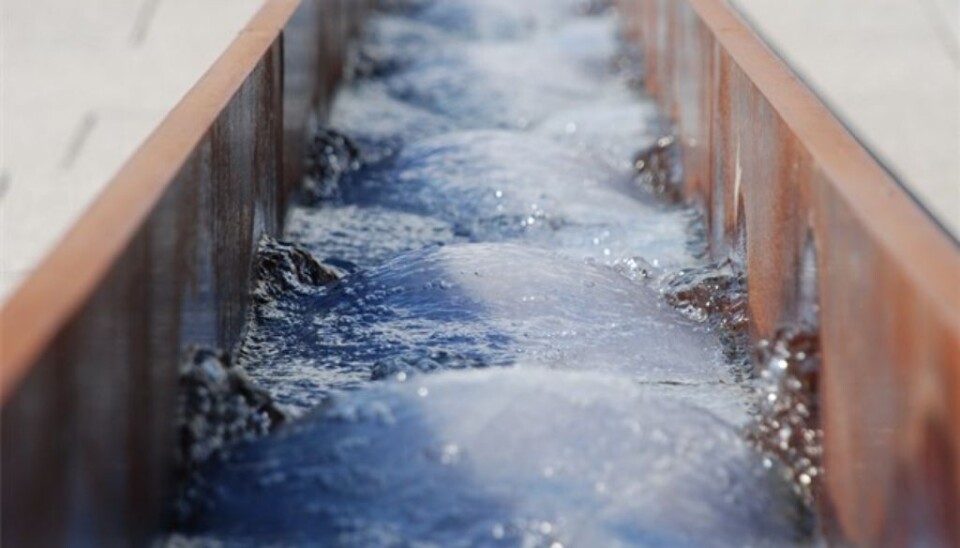
Make room for more water in the cities
Excessive precipitation and rising sea levels can spell trouble for cities. We should reboot our thinking about water and consider more use of runoffs, according to Norwegian scientists.
Denne artikkelen er over ti år gammel og kan inneholde utdatert informasjon.
Climatologists think that coping with larger amounts of water will be a major climate change problem for urban areas.
Researchers at the Norwegian Institute for Urban and Regional Research (NIBR) have studied ways Norwegian cities manage their water.
Mending and patching
Climate adaptation entails finding the right preparations for a warmer globe. In Norway that is expected to primarily mean dealing with more water.
“It flows into the cities as rainwater, melted snow and ice or seawater,” says Marte Winsvold of Norwegian Institute for Urban and Regional Research (NIBR).

“And the three sources create problems in different ways.”
How much adaptation is necessary? It is enough to do some minor repair work on the subterranean sewage system to increase flow capacity?
Winsvold draws a line between tinkering around with repairs and full transformation as opposing climate adaptation measures.
Mending and patching is what our water and sewage works continuously do now and the Intergovernmental Panel on Climate Change (IPCC) says this isn’t enough.
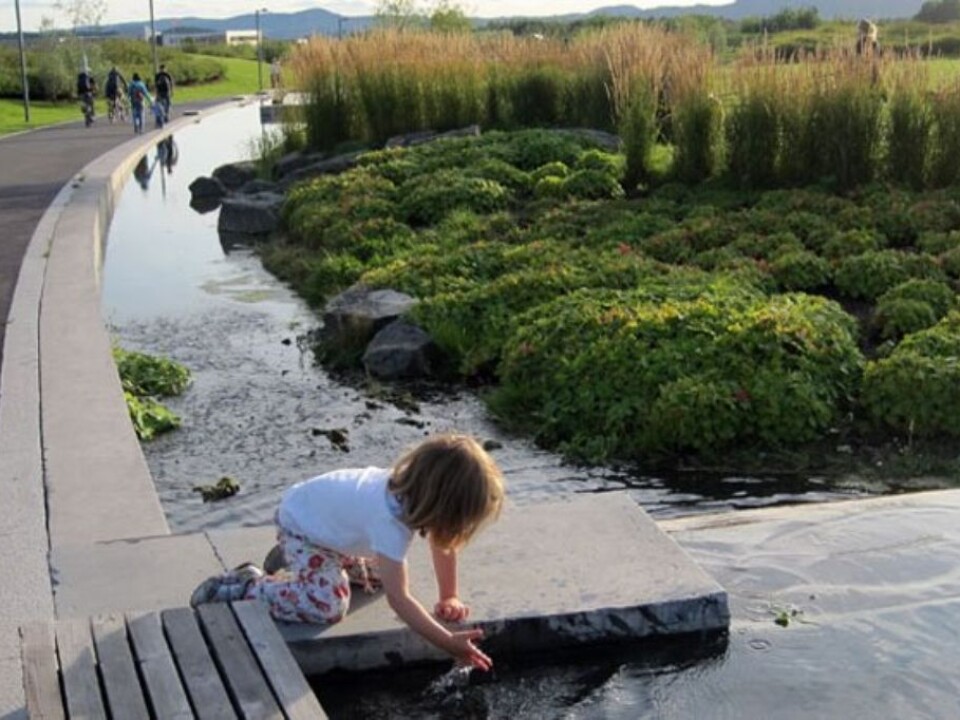
“The IPCC concludes in its latest report that the relatively limited measures which populations and countries have initiated to date are unsubstantial,” she says.
The researcher points out that we will be making such repairs in any case, perhaps doing a little more than before as water becomes more of an issue.
One response is to widen the diameter of drain pipes to tackle more rainwater. Another is to construct embankments in certain spots to prevent water from overflowing into basements and ground floors.
But these are only stopgaps.
Living with water
“Mending is usually about fending off the water, but transformation involves planning to live with this water,” explains Winsvold.
Instead of hoping to get the added surplus water to drain into contained pipelines, municipalities and developers can opt for a more open solution.
It can be transported in open ditches and streams between streets and buildings. It can also be absorbed by green, planted walls and rooftops.
Christian Vogelsang of the Norwegian Institute for Water Research (NIVA) thinks we should switch to a different approach to water in our cities.
“I think in the future we will look back at today’s water management as unwise and unnecessary wastage of resources,” he says.
He thinks much of Norway’s surface water is nearly clean enough to immediately be put to use watering gardens and parks, flushing toilets and washing clothes.
Playgrounds with pools
Both Winsvold and Vogelsang think we should let the water into our cities rather than shut it out.
People have started thinking in new ways a few places in Norway. A new urban district is developing at Fornebu, which was previously Oslo’s airport, and here runoff water is channelled into open canals instead of underground pipelines.
Drainage basins have been constructed as small lakes or ponds, placed adjacent to playgrounds for the joy of kids who like to splash around. These allow rainwater to gradually seep into the ground.
Builders at Fornebu, have also erected houses with plants and grass on roofs and walls, vegetation which also sucks up rainwater.
More conscious
Winsvold has travelled round Norway looking at how cities and municipalities currently handle water and the plans they have for the future.
“About six or seven years ago we had to explain to them what the consequences of climate change could be.”
“Now most of them are aware and climate adaptation is something they, at least vaguely, are planning a response to,” says Winsvold.
She perceives this change in attitudes is seeping into the minds of authorities in Norway’s 428 municipalities.
“Now there’s much more consciousness about this being a problem which municipalities will be encountering,” says the researcher.
------------
Read the Norwegian version of this article at forskning.no
Translated by: Glenn Ostling







